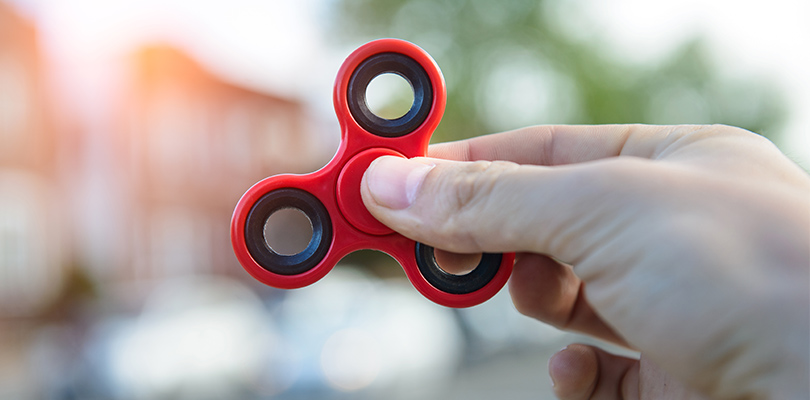Can You Have ADD Without Hyperactivity?
Attention deficit disorder (ADD) is in many ways similar to attention deficit hyperactivity disorder (ADHD), but without the symptoms of hyperactivity. This can sometimes make ADD more difficult to recognize and diagnose than the hyperactive form of the condition.
However, ADD without hyperactivity can still have a significant impact on the sufferer’s quality of life, and people with this condition may struggle to hold down a job or maintain healthy relationships.
Symptoms of ADD Without Hyperactivity
There are three major subtypes of ADD/ADHD: the predominantly hyperactive/impulsive subtype, the predominantly inattentive subtype, and the combined subtype.
Whereas people with the hyperactive/impulsive subtype may have difficulty sitting still or controlling their behavior, people with the predominantly inattentive subtype tend to be more quiet and introverted.
Because of this, ADD without hyperactivity can be more difficult to identify than the other subtypes, and can often go undiagnosed. According to criteria laid out by the American Psychiatric Association, at least six of the following symptoms need to be present in order to make a positive diagnosis of ADD without hyperactivity:
- A difficulty with paying attention to a task or activity for a sustained period of time.
- A lack of attention to detail or a tendency to make careless mistakes.
- Difficulty organizing tasks and activities.
- A tendency to be easily distracted.
- Inability to follow instructions or complete tasks, even if the person understands what is expected of them.
- Forgetfulness when carrying out tasks.
- Procrastinating or putting off tasks which require sustained attention.
- Frequently losing materials required to carry out tasks.
- Difficulty with paying attention, even when being spoken to directly.
These symptoms can make it difficult to carry out and complete even simple tasks, and people with ADD may have difficulty maintaining careers, relationships, and finances.
Diagnosing ADD Without Hyperactivity
ADD and ADHD are most often diagnosed in early childhood, but without the obvious symptoms of hyperactivity, ADD can sometimes go unnoticed until much later in life.
To make a diagnosis of ADD without hyperactivity, your physician will take a detailed case history including information about medical and behavioral issues. Because ADD is thought to have a genetic component, they are also likely to ask about whether you have other close family members with similar problems.
You might be asked to fill in a questionnaire regarding your symptoms, and your physician might conduct examinations to rule out other psychological conditions such as depression or anxiety, or physical conditions such as seizures or thyroid disorders.
For your physician to make a definite diagnosis, you will need to be experiencing difficulties in at least two significant areas of your life. This could mean issues at school or work, problems with relationships, or an inability to manage your finances effectively.
Treatment for ADD Without Hyperactivity
Although there is currently no cure for ADD, it is possible to manage the symptoms through a combination of medication and other therapies.
Phone games for ADHD offer many health benefits such as increasing creativity and improving cognitive flexibility. Here are the best ones to play.
Medication for ADD Without Hyperactivity
ADD, and ADHD are generally treated with a class of drugs known as stimulants. These medications include amphetamine salts (Adderall) and methylphenidate (Ritalin). There is some evidence to suggest that people with the predominantly inattentive subtype of ADD respond better to amphetamine salts, while those with the predominantly hyperactive subtype respond better to methylphenidate.
The side effects of stimulant drugs include:
- Sleep problems
- Reduced appetite
- Digestive issues
- Increased heart rate and blood pressure
- Headaches
- Mood swings
In people who do not respond well to stimulant drugs for ADD, non-stimulant drugs may be prescribed instead. The most common of these is atomoxetine (Strattera).
The side effects of atomoxetine include:
- Sleep problems
- Digestive issues
- Increased heart rate and blood pressure
- Headaches
- Dizziness
- Irritability
Antidepressants may also be prescribed for people with ADD without hyperactivity, especially if they are also suffering from depression, anxiety, or other mood disorders.
Therapy for ADD Without Hyperactivity
Medication for ADD works best when combined with therapies such as cognitive behavioral therapy (CBT) or coaching. These therapies can help people with this condition to recognize negative thought processes and patterns of behavior and take steps towards reversing them.
These therapies also provide an opportunity for people with ADD to learn to organize their time and plan tasks more effectively.
Therapy can be carried out on a one-to-one basis or in a group setting. It is often helpful to talk to other people with the same condition to discuss what works well and what does not, and to offer support to one another when needed.
Living With ADD Without Hyperactivity
Conditions like ADD can make it more difficult to carry out everyday tasks and to maintain schoolwork, jobs, and relationships. However, with the right treatment, it is possible to manage your symptoms, improve your general well-being, and live a relatively normal life.
If you think you may have ADD without hyperactivity, talk to your physician as soon as possible. The sooner you receive the right diagnosis and treatment, the sooner you can start to make positive changes to your life.







